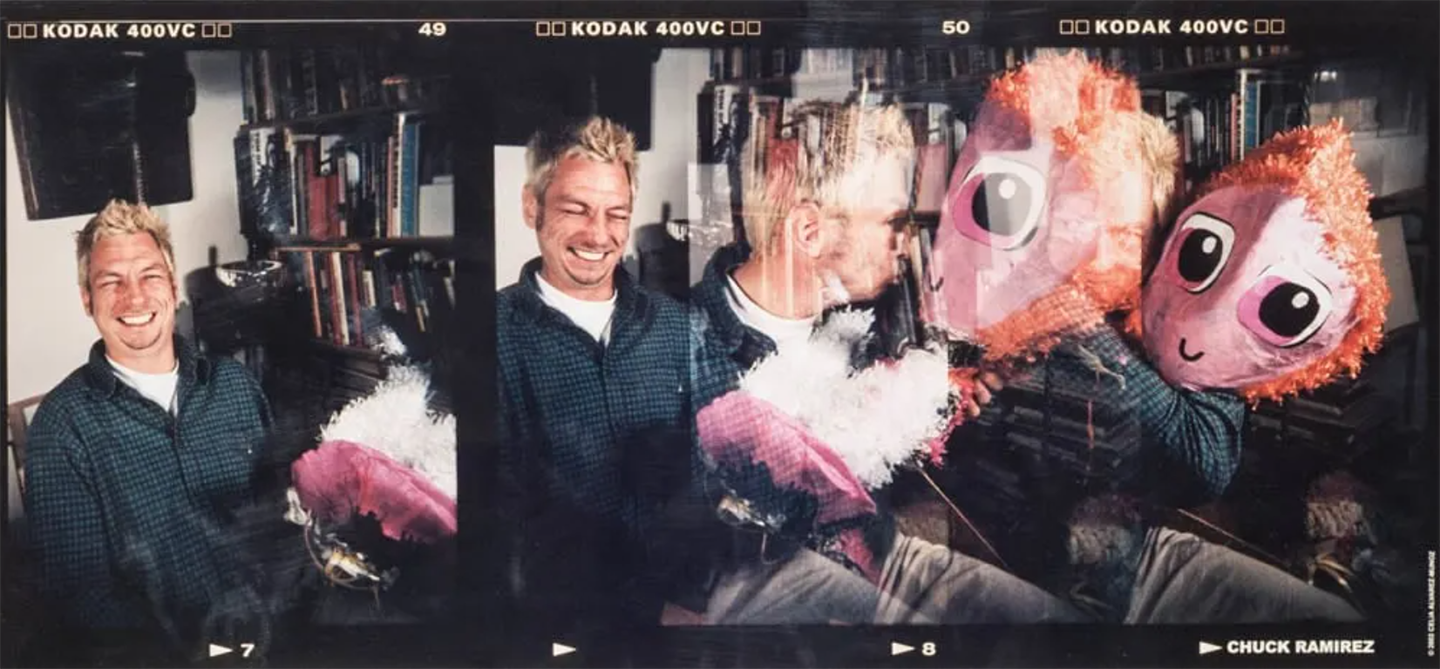Free and open to the public. Thursday to Sunday, 10AM—6PM.
150 Camp St, San Antonio, TX
Free and open to the public. Thursday to Sunday, 10AM—6PM.
150 Camp St, San Antonio, TX

The Linda Pace Foundation, Ruby City is pleased to announce the acquisition of 18 prints from Celia Álvarez Muñoz’s digital photographic series, Semejantes Personajes/Significant Personages (2002). The series documents Latinx artists practicing in San Antonio at that time. The prints acquired by the Foundation portray artists who have a significant regional and/or national reputation and 10 have work in the Collection. Additionally, each is an active artist today or remained so throughout their lifetimes as several are now deceased.

“I am honored to add this series of photographs by such a renowned artist to the Linda Pace Foundation, Ruby City Collection. These works are aesthetically compelling, technically innovative and an important document as they capture San Antonio’s Latinx art history. You can’t ask for anything better in a body of work—I’m delighted,” states Director of Ruby City, Elyse A. Gonzales.
Executed in 2002, Semejantes Personajes/Significant Personages, developed during Muñoz’s preparation for a solo exhibition at Blue Star Contemporary that same year. She recounts how and why the project developed:
“I’ve always said that if you want to know Texas, one has to start in San Antonio! I came to know the artists of this city through projects that brought me here, and I found them to be a strong, informed, and politicized community, unlike any other in Texas. That’s why I wanted to do this project. [I] always saw it as one that the city would want as a keepsake to capture the moment which impressed me as a rich and thriving time in the arts with so many active artists across several generations. I started with a list of 21 that soon grew to 41 crossing many disciplines and committed practices. They obligingly, responded allowing me into their studios, or just socializing, to become part of an experiment of marrying a basic or low-tech film camera with the [at that time] new digital technology. I am thrilled that Ruby City, San Antonio’s contemporary arts signifier, responded to the project.”
Muñoz developed a wholly original approach to the series making it both innovative and visually intriguing. Rather than take a straightforward portrait, Muñoz encouraged her subjects to do whatever they wished while she photographed them. She presented them as though film strips and in so doing emphasizes the (San Antonio) Latinx art community as ever active and lively, even though some may have passed away. For this reason, according to the artist, “the project remains open,” capable of being added to with more artists, underscoring how Latinx art and artists remain an enduring force.
To achieve her unique portraits, Muñoz employed a Holga, an inexpensive camera first produced in 1982 and well-known for the unintended distortions it produces such as light leaks and blur. (“The Holga’s unique, flexible, and unpredictable format, for me, was the perfect tool.”) The resulting photographs were then scanned and manipulated so that the subjects’ poses appear as though a stop-animation sequence. Many also include multiple images of an artist layered atop each other. All however are made to look as though a portion of a film strip. To emphasize this Muñoz digitally added in the Kodak film logo, the name of each subject, and her own name.
Semejantes Personajes/Significant Personages resonates with several works in the Collection. Not only with the Foundation’s holdings of Latinx works by the pictured artists but also several others who pictured their lived experiences such as Carlos Almaraz, David Avalos, David Cabrera, Alejandro Diaz, and Benito Huerta among others. Additionally, there are several photo-based examples which employ equally innovative conceptual techniques to their depiction of subject matter. They include works by artists such as Jennifer Bolande, Paul Pfeiffer, and Juan Miguel Ramos. Portraiture is another facet of the collection with which this series aligns such as works by Cruz Ortiz (whose painting is a portrait of Jesse Amado), Chuck Ramirez, Doris Salcedo, and Andres Serrano.
Celia Álvarez Muñoz is a Mexican American conceptual multimedia artist who is known for her photography, painting, installations, and public art, as well as for her writing. Born in El Paso, Texas, Muñoz’s work addresses the dichotomy of living between two cultures. Common themes in her practice include Catholicism, Mexican American experience, the past versus the present and English versus Spanish language. The artist incorporates themes of family and “communal memories” in her pieces. She uses text and images in her work to explore the ambiguous signs and signifiers where cultures meet and to communicate stories of American history, culture, and society.
Muñoz has received numerous awards, including two National Endowment for the Arts grants (1988, 1991) and the Art League Houston Lifetime Achievement Award in the Visual Arts. She was among the first cohort to receive the landmark Latinx Artist Fellowship award and was named 2-D Artist of 2022 by the Texas Commission for the Arts. Her work has been exhibited widely in group exhibitions, such as the Whitney Biennial (1991), and in solo presentations at the Museum of Contemporary Art San Diego (1991); Dallas Museum of Art (1991); Capp Street Project, San Francisco (1994); and University of Texas at Arlington (2002). Her work has been acquired by public collections, including the Art Institute of Chicago; Getty Research Institute, Los Angeles; Museum of Contemporary Art Chicago; and Museum of Fine Arts, Houston. Muñoz’s work was included in Radical Women: Latin American Art, 1960–1985, among other important traveling exhibitions. A career retrospective is currently traveling and was initiated at the Museum of Contemporary Art San Diego and is slated to travel to the University Museum at New Mexico State University, and the Philbrook Museum of Art. She is represented by Ruiz-Healy Galleries in San Antonio and New York City.